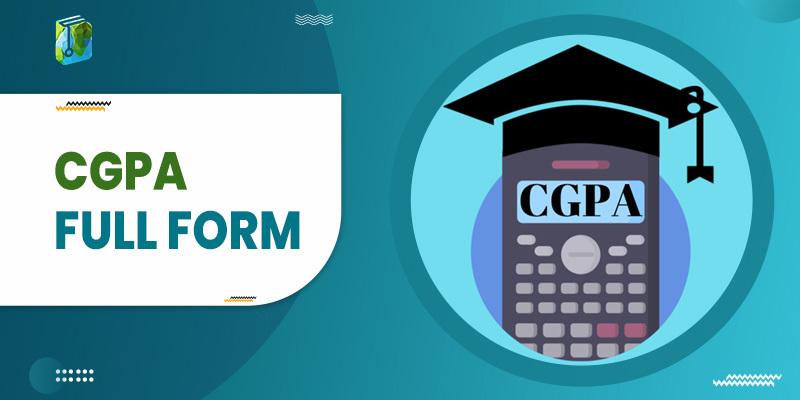CGPA is an educational grading system. The full form of CGPA stands for Cumulative Grade Point Average. It is used to evaluate the overall average performance of a student throughout their academic program, be it a high school, a Bachelor’s Degree, or a Master’s Degree program.
CGPA Full Form
Comparison of the CGPA system with the Indian grading system
The academic performance of The Indian schools and colleges is evaluated with either the percentage system or the 10-point CGPA system.
In the percentage system, original marks obtained by the student are converted to a percentage by dividing the marks obtained by total marks, after which they are being ranked in various divisions.
- Distinction – above 75%,
- First division- 60-75%
- Second division- 50-60%
- Third division- 40-50%.
Calculation of CGPA
The Cumulative Grade Point Average, a full form of CGPA is the weighted average of the grade points obtained by an individual throughout a particular academic course.
GPA (Grade Point Average) is a standardized method of calculating an average grade of a student over a term of a single semester. GPA is calculated by dividing the total score of grade points for all subjects throughout your semesters by the total number of credit hours attended. Credit hours are the total amount of time spent by a student in classes.
The calculations are as follows
- CGPA = Sum of all the Grade Points (GP) of each subject /5.
For instance, The GP for Subject 1 is 8, Subject 2 is 9, Subject 3 is 9, Subject 4 is 9.5, and Subject 5 is 7
Sum of GP= 8+9+9+9.5+7= 42.5
Therefore, Aggregate CGPA = 42.5/5= 8.5
- Overall indicative percentage of marks= 9.5*CGPA
- Calculation of subject-wise indicative percentage of marks= 9.5x GP of the subject
Converting CGPA into a gradation system:
Advantages of the CGPA system
- It takes the pressure off the students at every level as the gradation system does not focus on the students’ actual scores officially, therefore every student is not segregated based on their marks obtained.
- It helps the students to have the necessary education to transform them into responsible citizens without indulging much in the rat race.
- The best fact is that the students will receive the same recognition in the CGPA grading system as the percentage system but without the burdensome pressure.
- The CGPA system introduced the concept of measuring the knowledge of the students based on the project’s internal assignments and their answering ability in class. This means that the students are not being judged only based on their theoretical knowledge but also on the basis of their overall performance.
- With the help of the system, it becomes far easier for the teachers to categorize the student into groups such as average, good, and below-average ones so that the teachers can focus on students according to their needs.
- By knowing the grade instead of the percentage, the parents can stop comparing their children with others focusing and instead focusing on their weaknesses, leading to the child’s development.
Disadvantages of the CGPA system
- Under the CGPA system, the students focus mainly on attaining the minimum grades as they feel there is no competition to be the best at something which might decrease the quality of learning.
- In this system, the student getting an A has a score between 90 to 100 percent, and a student who has secured 99 percent will be awarded the same grade as the one who has obtained 90 percent, which is somewhere demotivating.
- The system lacks showing accuracy in the marks of students and judges the students on the basis of the grades they have achieved instead of their accurate ability.
People Also Reading:

